As someone who loves to cook, I’m always looking for ways to preserve fresh ingredients so that I can use them later.
Horseradish is a root vegetable that has a pungent flavor and can add a lot of depth to a variety of dishes.
But what do you do when you have more horseradish than you can use? Can you freeze horseradish? The answer is yes, and in this article, I’ll show you how.
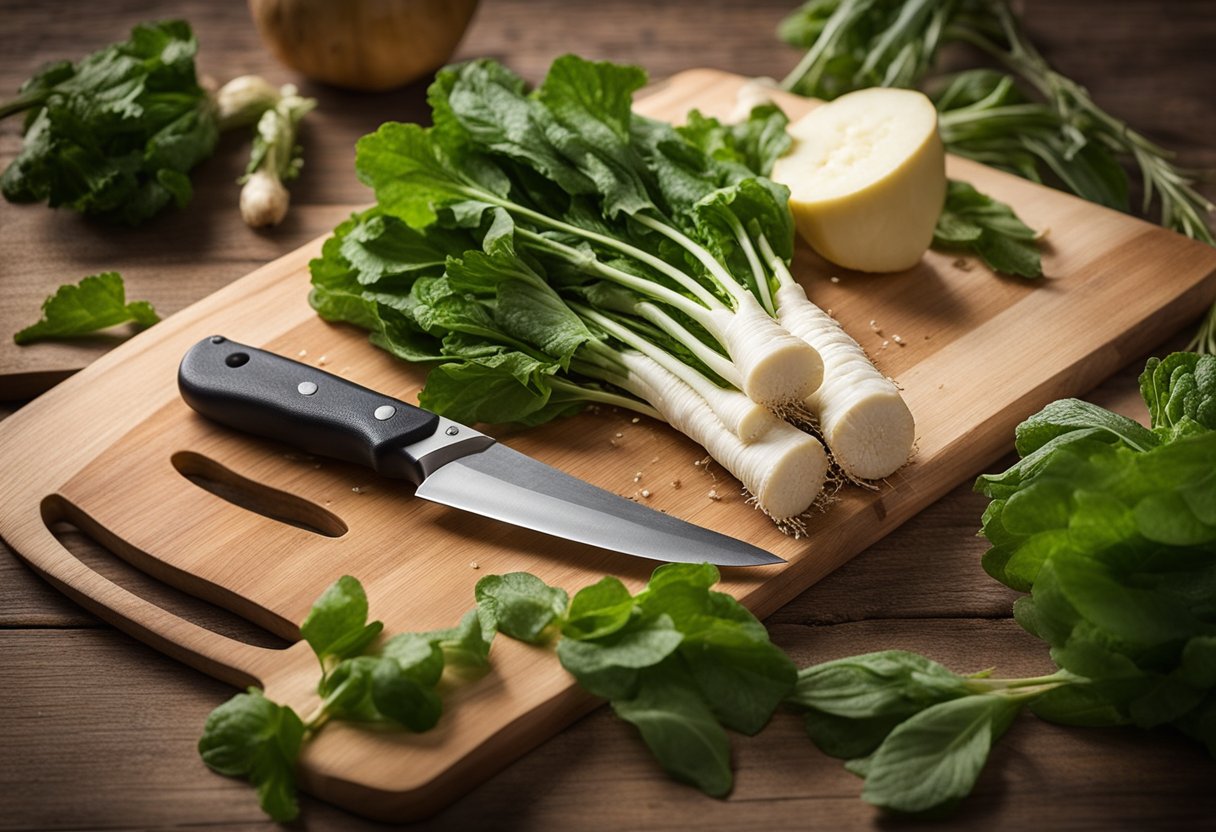
Understanding horseradish is the first step to freezing it successfully. Horseradish is a hardy root vegetable that grows in cool climates.
It has a strong flavor and aroma due to the presence of volatile oils that are released when the root is grated or chopped.
Horseradish is typically used as a condiment or seasoning in dishes like roast beef, sandwiches, and dips.
Freezing horseradish can help to preserve its flavor and aroma for several months, making it a great option for those who want to enjoy fresh horseradish all year round.
Key Takeaways
- Horseradish can be frozen to preserve its flavor and aroma for several months.
- To freeze horseradish, it must be grated and packaged in an airtight container or freezer bag.
- When thawing frozen horseradish, it’s important to use it as soon as possible to preserve its flavor and quality.
Understanding Horseradish
As a root vegetable, horseradish is a member of the radish family. Its scientific name is Armoracia rusticana.
Horseradish is known for its pungent taste and smell, which comes from the compound allyl isothiocyanate. This compound is also responsible for the vegetable’s health benefits.
Horseradish is a good source of vitamin C, which is an essential nutrient that helps support a healthy immune system.
It also contains other nutrients like calcium, potassium, and magnesium. Horseradish has a diuretic effect, which means it can help increase urine production and eliminate excess fluids from the body.
The health benefits of horseradish are numerous. It has been used for centuries as a natural remedy for various ailments.
Horseradish is believed to have anti-inflammatory, antibacterial, and antifungal properties. It is also thought to help relieve congestion and promote healthy digestion.
When it comes to freezing horseradish, there are a few things to keep in mind. Freezing can help preserve the flavor and texture of horseradish, making it a convenient option for those who want to enjoy it year-round.
However, it’s important to note that freezing can also change the texture of horseradish, making it less crunchy and more watery.
Overall, horseradish is a versatile vegetable that can be used in a variety of dishes.
Whether you’re looking to add some flavor to your favorite recipes or reap the health benefits of this powerful root vegetable, horseradish is definitely worth trying.
Preparing Horseradish for Freezing
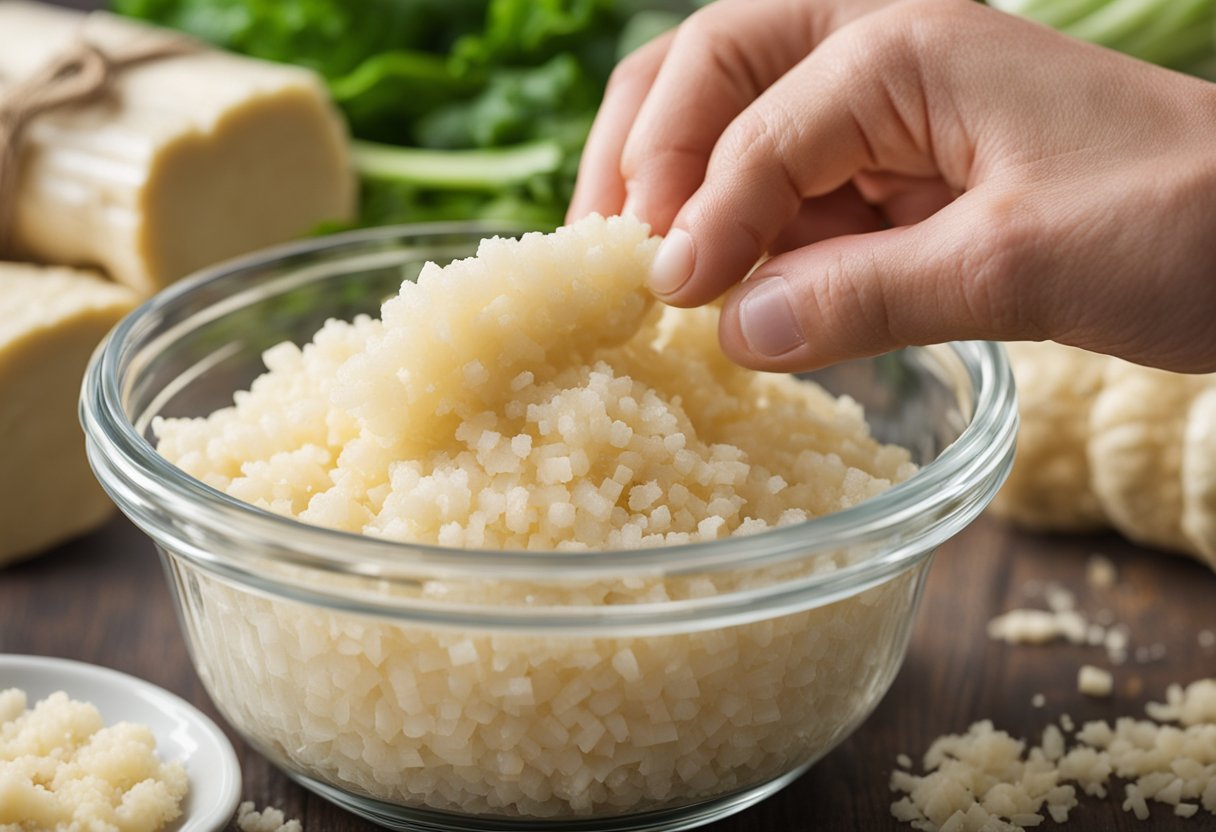
I have found that preparing horseradish for freezing is a straightforward process that requires some basic steps.
First, I wash the horseradish root thoroughly with water to remove any dirt or debris. Then, I use a vegetable peeler to peel the root, removing the outer layer of skin.
Next, I grate the horseradish using a food processor or blender. I prefer to use a food processor as it gives me more control over the consistency of the grated horseradish.
When grating the horseradish, I make sure to use the fine grater attachment to get a consistent texture.
Once the horseradish is grated, I place it in a clean, airtight container. I make sure to remove any excess air from the container before sealing it to prevent freezer burn.
Labeling the container with the date of freezing is also a good practice to ensure that I use the horseradish within a reasonable time frame.
Overall, cleaning and peeling the horseradish root and grating it are the main steps to prepare horseradish for freezing.
By following these steps, I can ensure that the horseradish stays fresh and flavorful for future use.
Packaging Horseradish for Freezing
When it comes to packaging horseradish for freezing, there are a few things to keep in mind to ensure optimal results.
First, it’s important to use airtight packaging to prevent freezer burn and keep the horseradish fresh. This can be achieved by using an airtight container or a heavy-duty freezer bag.
When using a freezer bag, it’s important to remove as much air as possible before sealing. Excess air can cause freezer burn and affect the quality of the horseradish.
One way to remove excess air is to use a straw to suck out the air before sealing the bag.
Labeling the horseradish is also crucial to ensure that you know what you’re freezing and when it was frozen.
Be sure to include the date that the horseradish was frozen so that you can keep track of its shelf life. Additionally, including the type of horseradish and any other relevant information can be helpful.
When packaging horseradish for freezing, it’s important to use a freezer-safe container or bag. Freezer-safe containers are designed to withstand low temperatures and prevent cracking or breaking.
Using a regular container or bag can result in damage to the container or bag and affect the quality of the horseradish.
Overall, packaging horseradish for freezing is a simple process that can be done with a few easy steps.
By using airtight packaging, removing excess air, labeling the horseradish, and using a freezer-safe container, you can ensure that your horseradish stays fresh and flavorful for up to 6 months.
The Freezing Process
When it comes to freezing horseradish, there are a few things to keep in mind to ensure the best results. First, make sure to wrap the horseradish in foil or place it in an airtight container or heavy-duty freezer bag. This will help to prevent freezer burn and keep the horseradish fresh.
Label and date the package before placing it in the freezer. Horseradish can be stored in the freezer for up to 6 months, but it is best to use it within the first 3 months for optimal flavor.
When you are ready to use your frozen horseradish, you can take it directly from the freezer to your dish. There is no need to thaw it beforehand, as the texture and flavor will not be affected.
It is important to note that while freezing horseradish can help to preserve it, it may lose some potency over time. To avoid this, consider grating the horseradish before freezing it, as this can help to retain its flavor.
Overall, the freezing process for horseradish is relatively straightforward. By following these simple steps, you can ensure that your horseradish stays fresh and flavorful for months to come.
Storing Frozen Horseradish
When it comes to storing frozen horseradish, there are a few things to keep in mind to ensure that it stays fresh and flavorful.
First and foremost, make sure to store your frozen horseradish in an airtight container or freezer bag. This will help prevent freezer burn and keep the flavor intact.
It’s also important to store your frozen horseradish in a dark, cool place. Light and heat can cause the flavor to deteriorate over time, so it’s best to keep it in a well-ventilated area away from direct sunlight.
Additionally, make sure to store your frozen horseradish away from any sources of humidity, as moisture can cause it to spoil more quickly.
When it comes time to use your frozen horseradish, simply thaw it out in the refrigerator overnight. Once it’s thawed, give it a good stir to ensure that the consistency is even, and then use it as you normally would.
If you find that the flavor has deteriorated over time, you can always add a bit of fresh horseradish to help boost the flavor.
Overall, storing frozen horseradish is a simple process that can help you enjoy the flavor of this spicy herb all year round.
Just make sure to store it in an airtight container in a cool, dark, and well-ventilated area, and you’ll be able to enjoy its unique flavor for months to come.
Thawing and Using Frozen Horseradish
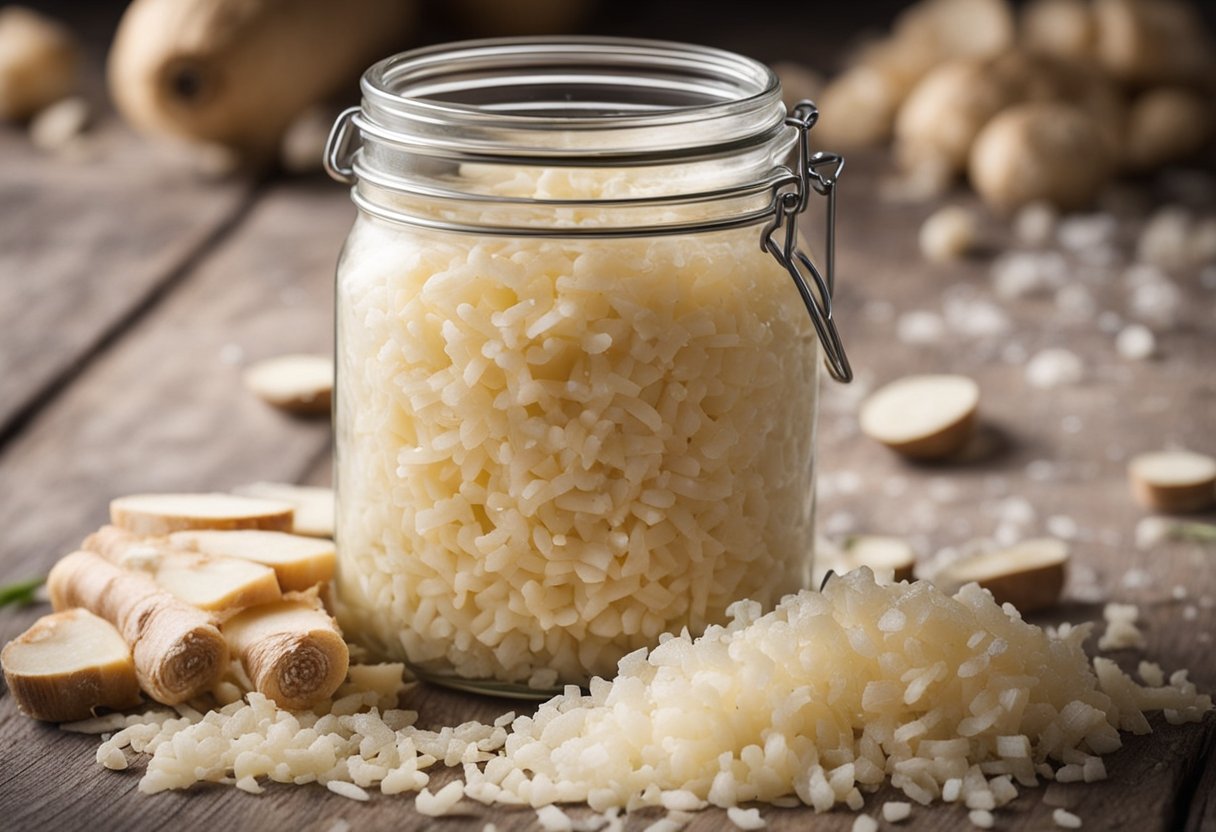
When it comes to using frozen horseradish, there are a few things to keep in mind. First, it’s important to properly thaw the horseradish before using it.
This can be done by simply placing the frozen horseradish in the refrigerator overnight. Alternatively, you can thaw it more quickly by placing it in a bowl of cold water.
Once the horseradish has thawed, it may appear watery or separated. This is normal and can be easily fixed by stirring the horseradish until it is smooth and well combined.
If you find that the horseradish is still too watery, you can strain it through a fine-mesh sieve to remove any excess liquid.
When using frozen horseradish, it’s important to keep in mind that it may be slightly less potent than fresh horseradish.
To compensate for this, you may want to use a bit more frozen horseradish than you would fresh.
Frozen horseradish can be used in a variety of ways, including as a condiment for meats and sandwiches, as a flavoring for dips and spreads, and as an ingredient in sauces and marinades.
It can also be added to soups and stews for an extra kick of flavor.
Overall, thawing and using frozen horseradish is a simple process that can help you enjoy this flavorful ingredient year-round.
Just be sure to properly thaw the horseradish before using it, and adjust your recipes as needed to account for any differences in potency between fresh and frozen horseradish.
Preserving the Flavor and Quality of Horseradish
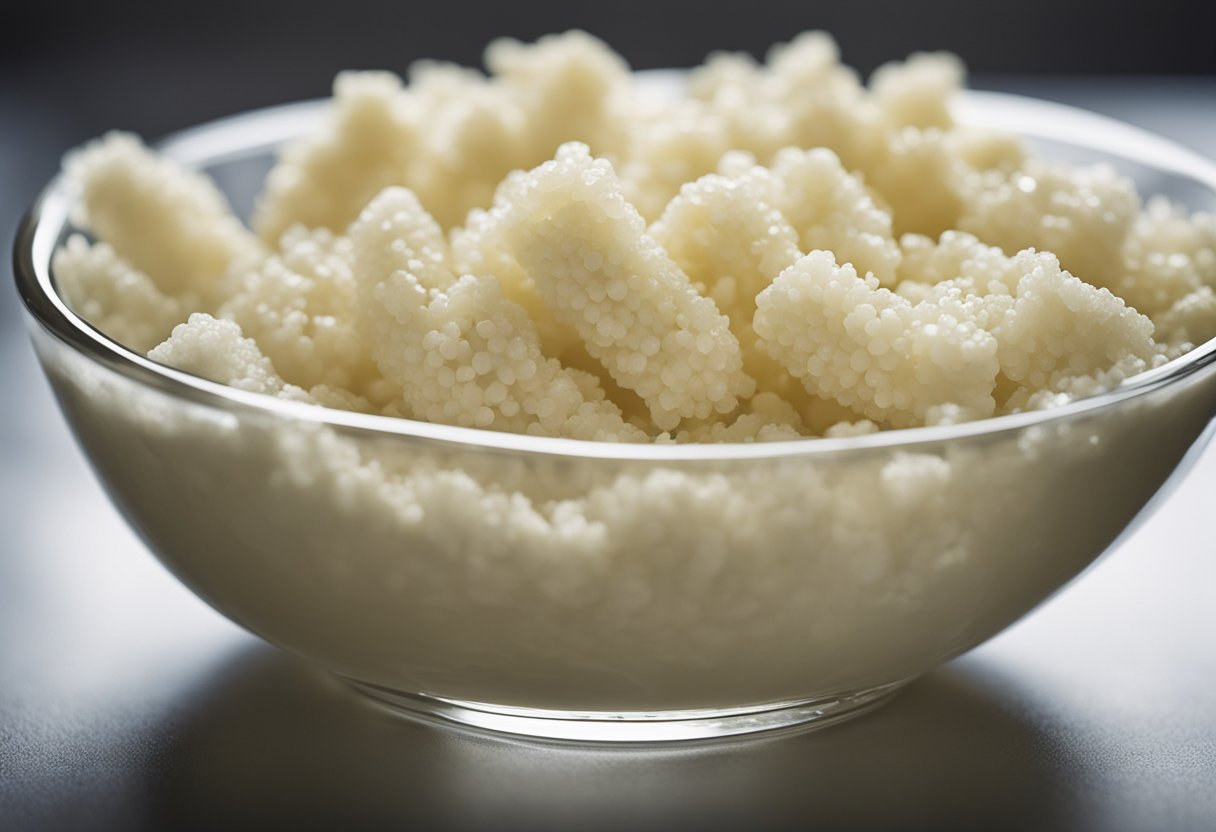
As someone who loves to cook, I always try to make the most of my ingredients. That’s why I often wonder if I can freeze horseradish without losing its flavor and quality.
After some research and experimentation, I can confidently say that you can freeze horseradish without sacrificing its pungent and spicy taste.
To preserve the flavor and quality of horseradish, it’s important to start with fresh roots. Look for firm and unblemished roots with no signs of mold or decay.
Once you have your horseradish roots, you can start preparing them for freezing.
First, wash the roots thoroughly under running water to remove any dirt or debris. Then, peel the roots using a vegetable peeler or a sharp knife.
Be careful not to cut yourself as horseradish can be quite pungent and irritate your eyes and skin.
After peeling, chop the horseradish into small pieces or grate them using a food processor or a hand grater. You can also add some white vinegar to the grated horseradish to enhance its flavor and keep it from turning brown.
Once you have grated the horseradish, transfer it to an airtight container or a freezer bag. Label the container with the date and freeze it immediately. Horseradish can last up to six months in the freezer if stored properly.
When you’re ready to use the frozen horseradish, simply thaw it in the refrigerator overnight. You can also use it straight from the freezer, but be aware that it may be slightly watery and lose some of its texture.
In summary, freezing horseradish is a great way to preserve its flavor and quality for future use. Follow these simple steps to freeze horseradish and enjoy its pungent and spicy taste all year round.
Incorporating Frozen Horseradish into Recipes
When it comes to incorporating frozen horseradish into recipes, there are a few things to keep in mind.
First, it’s important to remember that frozen horseradish may not have the same texture as fresh horseradish. However, it will still have the same flavor and can be used in a variety of culinary applications.
One popular use for horseradish is in sauces. Horseradish sauce is a classic accompaniment to roast beef, but it can also be used with seafood, meat, and even scrambled eggs.
To make horseradish sauce with frozen horseradish, simply mix it with sour cream, mayonnaise, lemon juice, salt, and pepper to taste.
Adjust the consistency by adding more or less sour cream or mayonnaise. This sauce can be used as a dip for potato salads or as a topping for grilled meats.
Cocktail sauce is another popular use for horseradish. To make cocktail sauce with frozen horseradish, mix it with ketchup, lemon juice, Worcestershire sauce, and hot sauce to taste. This sauce is perfect for dipping shrimp or other seafood.
Incorporating frozen horseradish into recipes can also add a unique flavor to salads. Try mixing it into a dressing made with olive oil, vinegar, Dijon mustard, and honey.
This dressing pairs well with greens, roasted vegetables, and grilled meats.
When cooking with frozen horseradish, it’s important to remember that it may be more potent than fresh horseradish.
Start with a small amount and adjust the seasoning as needed. Frozen horseradish can also be used in canning recipes, as long as it is properly prepared and stored.
Overall, incorporating frozen horseradish into recipes is a great way to add a unique flavor to your culinary creations.
With a little experimentation, you can find the perfect way to use frozen horseradish in your favorite dishes.
Potential Issues with Freezing Horseradish

As with any food item, there are potential issues that can arise when freezing horseradish. Here are some of the most common problems that may occur:
Freezer Burn
Freezer burn is a common issue when freezing any food item. It occurs when the food is exposed to air and the moisture evaporates, leaving the food dry and tough.
To prevent freezer burn, it is important to store the horseradish in an airtight container or freezer bag. Make sure to remove as much air as possible before sealing the bag or container.
Ice Crystals
Ice crystals can form on frozen horseradish if it is not stored properly. These crystals can cause the horseradish to become mushy and lose its consistency.
To prevent ice crystals from forming, make sure to store the horseradish in a container that is the appropriate size for the amount of horseradish being frozen.
This will help to minimize the amount of air in the container, which can lead to ice crystals.
Spoilage
Horseradish that has been frozen for too long can spoil. It is important to label the container or bag with the date it was frozen so that you can keep track of how long it has been in the freezer.
Generally, horseradish can be frozen for up to 6 months without any issues.
Mushy Consistency
Horseradish that has been frozen and thawed may have a mushy consistency. This can be prevented by freezing the horseradish in smaller portions and only thawing what is needed.
Thawing and refreezing horseradish can also cause it to become mushy.
Overall, freezing horseradish can be a great way to preserve it for later use. However, it is important to take the necessary precautions to prevent freezer burn, ice crystals, spoilage, and a mushy consistency.
By following these tips, you can ensure that your frozen horseradish remains fresh and flavorful.
Growing and Harvesting Horseradish
Growing horseradish is easy and rewarding, and it’s a great addition to any garden. Horseradish is a cold-hardy perennial that can be planted in late fall or early spring.
I prefer to plant it in early spring, as soon as the soil can be worked.
To grow horseradish, you’ll need well-drained soil that’s rich in organic matter. Horseradish prefers a pH between 6.0 and 7.5, so be sure to test your soil and amend it as needed.
I like to add compost and bone meal to my soil before planting.
Horseradish is a member of the cabbage family, so it’s important to rotate your crops to prevent disease and pests. I recommend waiting at least three years before planting horseradish in the same spot again.
Once your horseradish plants are established, they require little care. They prefer full sun but will tolerate partial shade. Water them regularly, especially during dry spells.
Harvesting horseradish is easy. You can start harvesting the roots in the fall of the first year, but the roots will be small.
For a larger harvest, wait until the second year. To harvest, dig up the roots with a garden fork and cut off the tops. Rinse the roots and store them in a cool, dry place.
In conclusion, growing and harvesting horseradish is a simple and rewarding process. With a little bit of care and attention, you can enjoy fresh horseradish all year round.
Alternative Methods of Preserving Horseradish
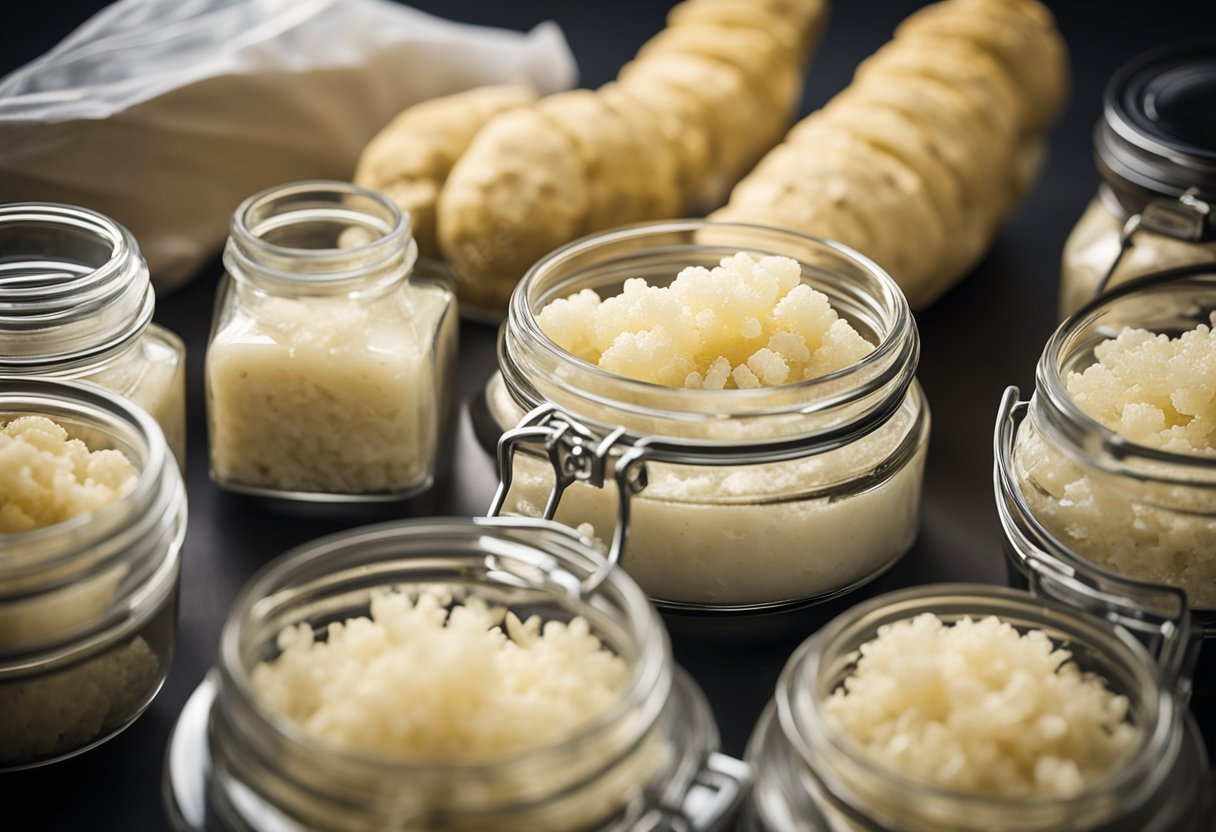
Aside from freezing, there are other methods to preserve horseradish. Here are some alternative methods:
Canning
Canning is a great way to preserve horseradish for a long time. To can horseradish, you need to peel and grate the root, then mix it with vinegar and salt.
After that, you can put the mixture into sterilized jars and process them in a boiling water bath. Canned horseradish can last for up to a year.
Dehydrator
Dehydrating horseradish is another option for preserving it. To do this, grate the root and spread it out on a dehydrator tray.
Set the temperature to 125°F and let it dry for 8 to 12 hours. Once it’s dry, you can grind it into a powder and store it in an airtight container. Dehydrated horseradish can last for up to a year.
Wasabi
If you’re looking for a substitute for horseradish, wasabi is a great option. Although wasabi is a different plant, it has a similar flavor profile to horseradish.
You can buy wasabi paste or powder and use it in the same way as horseradish.
Grinder
If you don’t have a food processor or a blender, you can use a manual grinder to grate horseradish. A manual grinder is a great option if you only need to grate a small amount of horseradish.
Simply peel the root and grate it into a bowl using the grinder.
Related posts:
Frequently Asked Questions
How can you preserve fresh horseradish?
To preserve fresh horseradish, it is recommended to store it in a cool, dry place. You can also wrap it in a damp paper towel and place it in a plastic bag in the refrigerator.
Fresh horseradish can last up to three weeks if stored properly.
What is the best way to store horseradish?
The best way to store horseradish is in the refrigerator. Once opened, it should be stored in an airtight container to prevent it from drying out.
It is also recommended to label the container with the date it was opened.
Can horseradish be frozen for later use?
Yes, horseradish can be frozen for later use. However, freezing can affect its potency and texture.
To freeze horseradish, grate or chop it into small pieces and place them in an airtight container or freezer bag. It can be stored in the freezer for up to six months.
How long can horseradish root last in the refrigerator?
Horseradish root can last up to three weeks in the refrigerator if stored properly. It is recommended to wrap it in a damp paper towel and place it in a plastic bag to keep it fresh.
What are some horseradish recipes to try?
Horseradish can be used in a variety of recipes, such as sauces, dips, and marinades. Some popular recipes include horseradish cream sauce, cocktail sauce, and horseradish mashed potatoes.
You can also add it to sandwiches or use it as a condiment for meats and seafood.
Is it safe to eat expired horseradish?
It is not recommended to eat expired horseradish as it can cause foodborne illness. Always check the expiration date before consuming horseradish or any other food product. If it is expired, it should be discarded.







